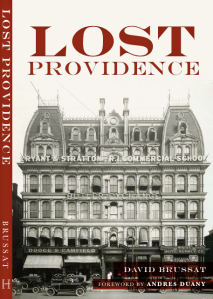
Opera Garnier, in Paris. (hotellouvremarsollier.com)
Here are a couple more passages from Alistair Horne’s Seven Ages of Paris: The first two are from his section on the Second Empire:
With so much borrowed from the past, was there (leaving aside the new apartment blocks) any such thing as a Second Empire style? In church architecture, certainly, there was little to boast about: the Trinité was built in pseudo-Renaissance style; Saint-Augustine, crammed ingeniously into a narrow triangular space, was a Romano-Byzantine pastiche constructed around one of Baltard’s iron frameworks. Perhaps the age is best epitomized by Charles Garnier’s new Opéra, which in its florid magnificence symbolized the wealth of the day, its affection for the new rococo, with just a touch of vulgarity. …
Controversy continues to surround the merits of Haussmann’s new Paris. At the time it had its vigorous critics. The conservative Goncourt brothers said it made them think of “some American Babylon of the future”; Gautier agreed, “This is Philadelphia; it is Paris no longer!” (though he had never seen Philadelphia). George Sand, however, construed it a blessing to be able to walk without “being forced every moment to consult a policeman on the street corner or the affable grocer.” Emile Zola, in his novel Un Page d’amour, tried hard to depict the great city as “an enormous storm-tossed ocean, or a distant and alien Babylon,” but to the end affection triumphed over distaste. “I love the horizons of this big city with all my heart … depending on whether a ray of sunshine brightens Paris, or a dull sky lets it dream, it resembles a joyful and melancholy poem. This is art, all around us. A living art, an unknown.”
In the section on the Belle Epoque, Horne continues:
The departure of Haussmann, the collapse of the Second Empire and the chaos of the Commune brought a halt to public works and private buildings in the early 1870s. The great era of Haussman was over, and nothing like it would ever be seen again in Paris. In the early 1880s, private building revived and even reached a peak that surpassed the previous boom of the 1860s. But, after 1870, under the Third Republic the city grew more slowly. By the 1900s, the rate of building permits had sunk to around 2,000 a year. Under Garnier, who became doyen of architectural taste in the École des Beaux-Arts, a greater freedom was afforded the architect until the end of the century. This was in marked contrast to the strictly controlled street uniformity imposed by Haussmann. Apartment houses grew taller and more motley in their exoticism and luxuriance. Glass and metal bow windows began to bulge out over the street. Briefly, very briefly, the craze for Art Nouveau seized the city, surviving mainly in the entrances to the new Métro stations commissioned at the end of the century. Paris borrowed from William Morris, while Manhattan borrowed from the Parisian apartment block. From a municipal commission set up in 1896 to re-examine building regulations, Louis Bonnier emerged as the high priest of change and variety. Under his influence façades became more and more florid, often to the point of the ridiculous and the fantastical. Once again building regulations permitted structures to hang out over the street, as they had done before Louis XIV, making the new apartment blocks look top-heavy. Individualism and variety became everything. Haussmann would have rolled in his grave. Despite the demand for higher and higher buildings, though, Bonnier fortunately opposed the novelty of the American skyscraper as inappropriate.
It’s hard to know what to make of all this except that the back and forth of building fashion in Paris, between sumptuous opulence and restrained opulence and back again, has left the world with a Paris whose beauty forms a symphony in counterpoint that we can all admire. Maybe Haussmann would not have rolled in his grave.



It was a thrill to visit the opera house, more that 50 years ago. cheers, Philip
LikeLike